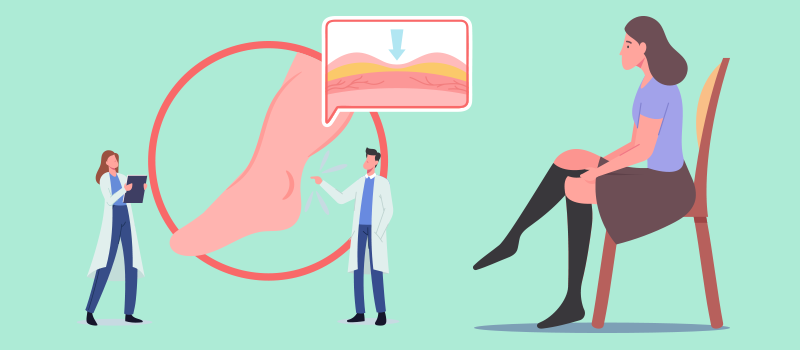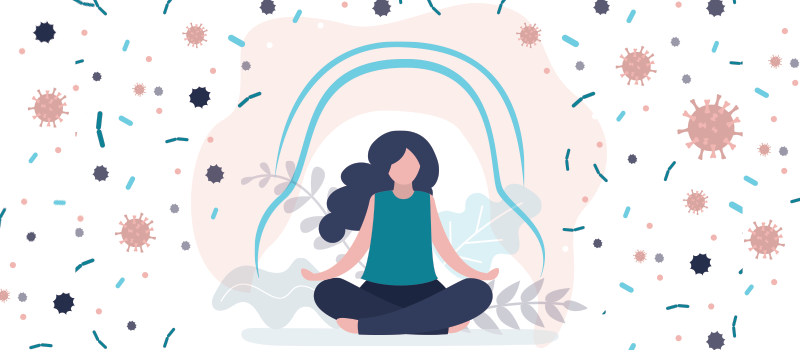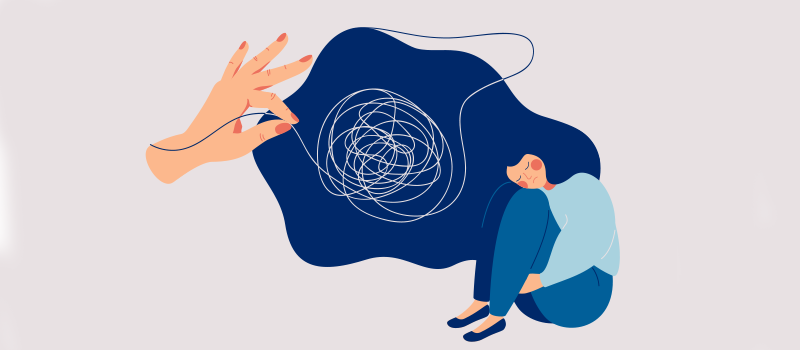What’s the Buzz
The Bee Healthy Blog
Swelling in Legs: Causes and Treatments

Leg swelling, also called oedema or edema, commonly affects people of all ages. It can be an uncomfortable symptom and can make it difficult to go about your daily routine. The swelling can be in one leg or both. Often, your legs swell when you’ve been sitting or standing for a long time. Moving around or elevating your legs can help reduce swelling. But sometimes, leg swelling is a sign of an underlying health condition. Please continue reading to find out what causes swollen legs and how to relieve swelling in the legs.
What is the most common reason for leg swelling?
Sitting or standing for long periods of time is a common reason for mild swelling in the legs. This is called dependent edema. It occurs because fluid naturally pools in your legs if you are on your feet for a long time. Moving around and raising your legs above the level of your heart can help.
Other common conditions that can cause swelling in the legs include:
Pregnancy
During pregnancy, the uterus puts pressure on the blood vessels of the lower limbs. This can lead to leg and ankle swelling. If swelling occurs during pregnancy, it may help to avoid standing for long periods, rest with your feet up as much as possible, wear comfortable shoes, stay well hydrated, and get regular exercise.
Chronic venous insufficiency
Blood vessels (veins) have valves that ensure blood flows toward the heart. When these valves in the leg veins are weak, it becomes difficult for enough blood to flow back to the heart. As a result, blood pools in the lower extremities. This is called venous insufficiency or varicose veins. It causes fluid buildup, leading to swelling and pain in the legs. Other symptoms include a feeling of heaviness in the legs, discoloration of the skin, skin infection, leg ulcers (open sores), and varicose veins.
Lifestyle changes such as leg elevation, regular exercise, and weight management can help to prevent swelling. In addition, your healthcare provider may ask you to wear compression stockings (special garments that help to remove fluid from the body’s tissues).
Other treatment options for chronic venous insufficiency include medications, such as antibiotics to treat infections and blood thinners to prevent blood clots. Non-surgical treatments include radiofrequency ablation of the affected vein and sclerotherapy. Surgical options include vein ligation and stripping, vein bypass, and minimally invasive procedures such as SEPS (subfascial endoscopic perforator surgery), where the damaged vein is blocked off.
Injuries and infections
Injuries to the lower legs can cause swollen ankles, feet, and legs. For example, an anterior cruciate ligament (ACL) tear can cause leg swelling, and an Achilles tendon rupture can cause a swollen foot. Wounds and infections in the lower extremities can also make legs swell.
It’s important to seek medical care quickly. Your healthcare provider will obtain a history, perform a physical examination, and order blood tests and imaging studies to determine what is causing or making your swelling worse. Treatment for the underlying condition can help reduce swelling.
Medication side effects
Swollen legs can be an adverse effect of certain medications, such as nonsteroidal anti-inflammatory drugs (ibuprofen, celecoxib), medications used to treat high blood pressure (calcium channel blockers and beta blockers), certain antidepressants, hormones (testosterone, progesterone, estrogen), steroid medications, certain antivirals (acyclovir), and some chemotherapy drugs. If you have severe swelling, talk to your healthcare provider about switching to another medication.
What medical condition causes swollen legs?
Deep vein thrombosis (DVT)
This is a condition in which a blood clot forms in deep veins, usually in the leg veins. DVT can cause one swollen leg with pain, skin color changes, and a feeling of warmth in the affected leg. You should get immediate medical attention if this happens.
Treatment options for DVT include blood thinner or clot-buster medications, wearing compression stockings, and having a filter placed in your vena cava, a large vein in the abdomen, to prevent the blood clot from breaking off and lodging in your lungs.
Chronic kidney disease
This is a condition in which the kidneys are damaged and unable to filter blood normally. The decrease in kidney function can lead to sodium retention and excess fluid buildup, causing swelling in the feet and ankles. Treatment for chronic kidney disease can help to manage chronic swelling.
Inflammatory conditions
Inflammatory and immune system conditions such as rheumatoid arthritis and osteoarthritis can cause tenderness, warmth, stiffness, and swelling in the affected joints. Inflammation of bursae (tiny fluid-filled sacs near joints) can cause a dull, aching pain and swelling in the feet, ankles, and lower legs.
Congestive heart failure
In people with congestive heart failure, the heart does not pump blood well enough for normal blood flow to various parts of the body. It causes blood and fluids to collect in the lungs and legs over time. Medications and other chronic heart failure treatments can help to reduce swelling in the legs, feet, and ankles.
Liver disease
People with liver disease such as cirrhosis have increased pressure in the portal vein, which can cause fluid retention, leading to swelling. Treatment for the underlying health condition may help to reduce swelling caused by liver disease.
What is the best treatment for swollen legs?
The following home remedies can help to ease swelling in the feet, ankles, and legs.
- Eat a low-sodium diet (excessive salt intake can cause fluid retention and swelling in the legs).
- Get regular exercise to maintain good blood circulation in the legs.
- Take frequent breaks and walk around if you’re sitting for long periods of time, such as while working on a computer or on long car rides or flights.
- Raise your legs above the level of your heart for 30 minutes at a time, several times a day, to help drain excess fluid from the legs.
- Apply an ice pack on the swollen area for 20 minutes at a time 2-3 times a day to help with pain and swelling.
These measures can provide temporary relief from leg swelling. It’s important to seek medical care so that the cause of your leg swelling can be identified and treated.
When should I be concerned about leg swelling?
You should be concerned about leg swelling and see a doctor if it lasts for more than a week and does not get better with home remedies such as leg elevation, a low-salt diet, and regular exercise.
Get immediate medical attention if you develop signs and symptoms of a pulmonary embolism (PE). This is a serious condition and life-threatening complication of a blood clot in a vein of the lower leg. Signs and symptoms include trouble breathing, chest pain, coughing up blood, lightheadedness, dizziness, fainting, fast pulse, and fast breathing.
References:
- https://my.clevelandclinic.org/health/diseases/12564-edema
- https://my.clevelandclinic.org/health/diseases/16872-chronic-venous-insufficiency-cvi
- https://www.nhs.uk/pregnancy/related-conditions/common-symptoms/swollen-ankles-feet-and-fingers/
- https://www.aafp.org/pubs/afp/issues/2013/0715/p102.html
- https://www.mayoclinic.org/diseases-conditions/deep-vein-thrombosis/symptoms-causes/syc-20352557#
- https://www.kidney.org/news/ekidney/august14/10_Signs_You_May_Have_Kidney_Disease#
- https://www.mayoclinic.org/diseases-conditions/rheumatoid-arthritis/symptoms-causes/syc-20353648
- https://my.clevelandclinic.org/health/diseases/21706-heel-bursitis#
- https://my.clevelandclinic.org/health/diseases/17069-heart-failure-understanding-heart-failure#
- https://www.mayoclinic.org/diseases-conditions/cirrhosis/symptoms-causes/syc-20351487#
- https://www.ucsfhealth.org/education/guidelines-for-a-low-sodium-diet#












SOCIAL